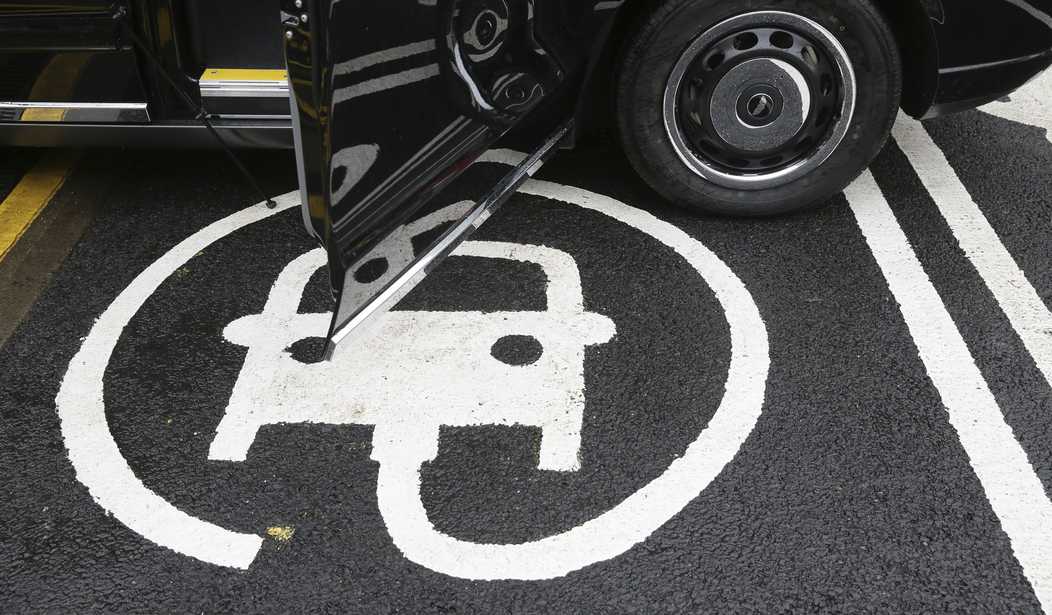First the New York Times warned about the environmental impact of transforming America’s vehicles to electric. Now CNN reports on the devastating consequences of the mining that such a transformation would necessitate. Environmentalists want to save a species of buckwheat from extinction, an issue that would be largely academic except for the need to produce billions of batteries to replace gasoline:
Fewer than 40 years after humans discovered Tiehm’s buckwheat, a Nevada plant with yellow flowers, they may drive it to extinction in pursuit of electric vehicles, a technology widely hailed as being environmentally friendly.
Environmentalists say the benefits of Tiehm’s buckwheat could be vast, but its full significance is unknown. What’s certain, they say, is that guarding Tiehm’s buckwheat is important for preserving biodiversity on Earth. The flower is so newly discovered that it hasn’t been studied thoroughly, they say. But botanists say they’re impressed with Tiehm’s buckwheat’s ability to thrive where few species can — poor soil that’s full of boron and lithium.
That lithium in Nevada, and elsewhere in the world, increasingly has the attention of businesses and governments. Ioneer, an Australian mining company, has said it’s ready to break ground on a lithium mine later this year on the land where Tiehm’s buckwheat grows. Under the barren soils lies 146.5 million metric tons of lithium and boron. The project has been valued at $1.265 billion.
Well, you can’t make pancakes without wiping out some buckwheat, right? Not only does CNN highlight the environmental risk of electric cars and other “green energy” technologies, it also provides the scale on which that damage must occur:
Electric vehicles can’t happen without lithium — and a lot of it. Lithium is a critical mineral in the batteries that power electric vehicles. The world will need to mine 42 times as much lithium as was mined in 2020 if we will meet the climate goals set by the Paris Agreement, according to the International Energy Agency. Existing mines and projects under construction will meet only half the demand for lithium in 2030, the agency said.
The United States has only one active lithium mine today. The country will need 500,000 metric tons of lithium carbonate equivalent by 2030, according to research by RK Equity, a New York firm that advises investors on lithium. The entire global lithium carbonate equivalent market last year was 325,000 metric tons, RK Equity partner Howard Klein told CNN Business.
Got that? The world will have to mine forty-two times the capacity at which it currently mines to meet those transformational commitments. The US will have to produce almost twice the entire global production just to meet our own needs in less than a decade. That will require a lot of digging in the ground, which means not just wiping out native plant species but also a lot of water pollution, road-building, processing facilities, and other un-environmental activities. Either that or we outsource all of that pollution to other countries, pay through the nose for the lithium, and make ourselves entirely dependent on foreign sources for our critical energy needs. And we haven’t even yet begun discussing the environmental impacts of massive battery disposal.
What’s most interesting about this, though, is that CNN has followed the NYT’s lead. We have been warning for years that so-called “green energy” options are anything but “green.” The materials are rare, their acquisition is massively destructive — far more so than drilling or fracking — and in the cases of cars, leave the question of energy supply completely unanswered. The mainstream media has belatedly begun raising those issues, and one has to wonder why that’s happening now — even if we’re happy that those questions are finally getting attention.








Join the conversation as a VIP Member